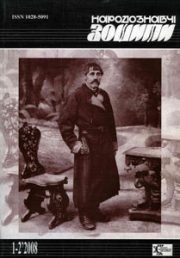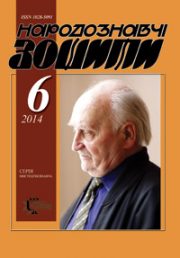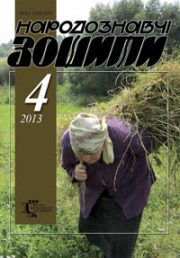The Ethnology Notebooks. 2022. № 1 (163), 226—235
UDK [730.027.036.5.044.071.1″19/20″:930.2:929](477)
DOI https://doi.org/10.15407/nz2022.01.226
HISTORY OF UKRAINE IN NAMES: SCULPTURAL IMAGES OF YAROSLAV SKAKUN
YATSIV Roman
- ORCID ID: https://orcid.org/0000-0003-1509-5367
- PhD, professor at the Artwood department
- of the Lviv National Academy of Arts,
- 38, V. Kubiyovycha str., 79011, Lviv, Ukraine,
- Contacts: e-mail: jaciv@ukr.net
Abstract. The article considers the rich creative experience of the famous modern artist and teacher, folk artist of Ukraine Yaroslav Skakun, author of numerous works on historical topics. He works in the genres of easel and monumental sculpture. For more than 40 years of professional artistic path Skakun created in various forms images of B. Khmelnitsky, T. Shevchenko. I. Franko, M. Hrushevsky, E. Petrushevych, V. Kubiyovych, S. Krushelnytska, S. Ludkevych, Metropolitans S. Sembratovych, A. Sheptytsky, Pope John Paul II, Bishop J. Shumlyansky, Father Omelyan Kovch, etc. The broad factual material reveals the methodological approaches of the artist to the semantic content of images of historical figures.
The relevance of the article lies in the fact that for the first time in historical science an attempt is made to systematize the artist’s work, it’s appropriate thematic range.
The object of research is the sculptural works of Y. Skakun, made by him in different periods of creativity and in various genre constructs, the subject of research is the specificity of the author’s work on artistic images of specific historical personalities, the principles of formalistic embodiment of the ideas of sculptural works.
The methodological basis of the study is biographical, historical-synchronous and scientific-reconstructive methods that allowed at the interdisciplinary level to consider a complex of psychological, family-household and other factors in the formation of the spiritual and value worldview of the artist, as well as structural-typological and formal-analytical methods, thanks to which the problem of the structure of the artistic image in the sculpture of Y. Skakun is considered.
Keywords: history of Ukraine, historical figures, historical memory, fine art, sculpture, monumental plastic, easel sculpture, portrait genre, memorial table, monument, artistic image, ideological and aesthetic worldview, ideology, spiritual and value worldview, realism, modernism, formal concept, author’s manner, style.
Received 16.02.2022
REFERENCES
- Eustachia, Shymchuk. (Ed.). (1982). Exhibition of works by young artists: Yaroslav Skakun (sculpture), Lubomyr Yaremchuk (sculpture), Roman Zaritsky (graphics), Igor Kovalevych (ceramics), Lyudmila Kovalevych (ceramics), Uliana Yaroshevych (ceramics), Oksana Kutsoy-Kovalyshyn (weaving): Catalogue. Lviv [in Ukrainian].
- Yatsiv, R. (1982, January 20). Slogan of the young.- search. Lviv truth. Lviv [in Russian].
- R. Yatsiv]. (2011). Anniversary of Yaroslav Skakun. Artistic heritage (Part 2, pp. 102—103). Lviv: Lviv National Academy of Arts [in Ukrainian].
- Toropovsky, M. (2011). White dance with Melpomene: A book-performance in four acts with a prologue, but without an epilogue. Lviv Opera and Ballet Theater on steep turns of modern history: two volumes (Vol. 1). Lviv: Proman [in Ukrainian].
- Marchuk, L. (2012). Gallery of personalities in Lviv Opera House. Viche (Part 1). Kyiv [in Ukrainian].
- LLC «Rozvadiv building materials». Retrieved from: https://volodimir-b.prom.ua/ua/about_us.






